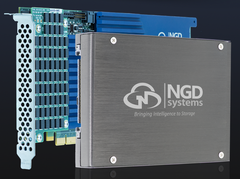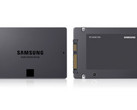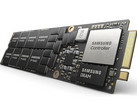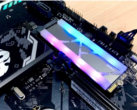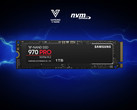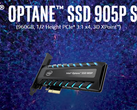SSDs will completely replace the venerable HDDs in a few years, but until then, the SSD makers are trying to figure out how to boost the storage capacities and keep the production costs and MSRPs decently low. PCIe NVMe SSDs are clearly the fastest solutions on the market right now, but the storage capacities are not quite cutting it for now, at least in the consumer sector. On the server side, however, there are some new interesting developments coming along. NGD Systems, for example, is pushing for the adoption of programmable SSDs dedicated to AI, machine learning and computer vision applications.
NGD’s Catalina 2 drives are based on Toshiba’s BICS3 3D TLC NAND memory chips and they are compatible with the fast PCIe 3.0 x4 NVMe 1.3 interface, which yields peak sequential read/writes of up to 3.9 GB/s. The new drives come in 2.5-inch/U.2 and add-in-card form factors for increased versatility. While the 2.5-inch models will feature 4/8/16 TB capacities, the add-in-cards can support up to 32 TB of storage space. Since the drives also integrate an FPGA, the TDP rating is upped to 12-13 W.
As far as the FPGA part is concerned, the Catalina 2 drives include the latest Xilinx chip with several general-purpose ARM Cortex-A53 cores plus programmable transistors, which allow for in-storage processing commands like search and analyze, without the need to implicate the CPU. This helps to reduce the power consumption and the load on data buses. In order to perform the in-storage processing tasks, the FPGA itself runs on a micro-OS Linux platform.
The new Catalina 2 devices are already available for clients who are willing to program apps for the FPGA chips, but, unfortunately, NGD does not publicly mention the prices for the SSDs.
Loading Comments
I first stepped into the wondrous IT&C world when I was around seven years old. I was instantly fascinated by computerized graphics, whether they were from games or 3D applications like 3D Max. I'm also an avid reader of science fiction, an astrophysics aficionado, and a crypto geek. I started writing PC-related articles for Softpedia and a few blogs back in 2006. I joined the Notebookcheck team in the summer of 2017 and am currently a senior tech writer mostly covering processor, GPU, and laptop news.
> Expert Reviews and News on Laptops, Smartphones and Tech Innovations > News > News Archive > Newsarchive 2018 07 > NGD reveals 16/32 TB Catalina 2 programmable SSDs
Bogdan Solca, 2018-07- 6 (Update: 2018-07- 6)


